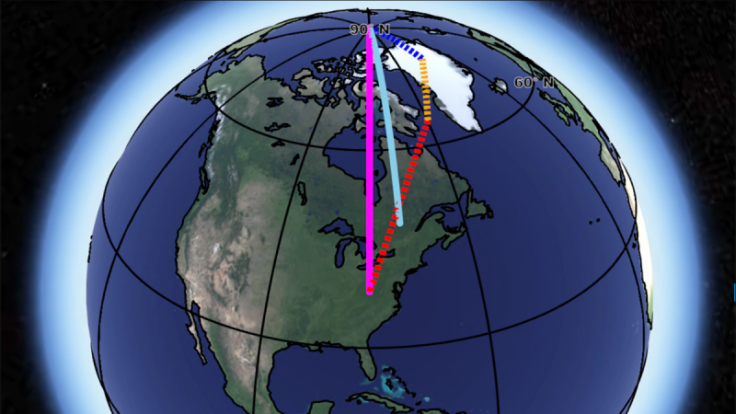
The Earth while spherical is by no means a perfect ball-shaped body, its weight is also not evenly distributed on the surface. So while a desk globe with a fixed north and south pole spins smoothly on its axis, the Earth wobbles on its spin axis- the imaginary straight line that connects the north pole with the south pole right through the planet.
This wobbling of the spin axis, explains NASA, is called polar motion and its drift has, over the 20 century drifted by about 10 cm per year. Over the course of a hundred years, that translates to about 10 metres of drift.
NASA has found three major causes for axial drift using observational data as well as model-based data spanning the 20th century and they are—contemporary loss of Greenland's ice mass, glacial rebound, and mantle convection.
"The traditional explanation is that one process, glacial rebound, is responsible for this motion of Earth's spin axis. But recently, many researchers have speculated that other processes could have potentially large effects on it as well," said first author Surendra Adhikari of NASA's Jet Propulsion Laboratory.
"We assembled models for a suite of processes that are thought to be important for driving the motion of the spin axis," he explained. He then identified three sets of processes that he calls "crucial"—melting of the "global cryosphere (especially Greenland) over the course of the 20th century is one of them." Yes, it is related to climate change.
In a generalised view, redistribution of the Earth's mass, both on and from within the planet is known to affect rotation. This includes, but is not limited to changes to the land, ice sheets, oceans as well as mantle flow, explains NASA.
The steadily increasing global temperatures of the 20 century caused Greenland's ice mass to decline—in fact, a total of about 7,500 gigatons (7,500,000,000,000 tonnes) of Greenland's ice melted away and fell into the ocean in that century. Greenland is, as a result, one of the top contributors of mass transfer into the world's seas rising sea levels, and, as a result, putting a drift on Earth's spin axis.
"There is a geometrical effect that if you have a mass that is 45 degrees from the North Pole—which Greenland is—or from the South Pole (like Patagonian glaciers), it will have a bigger impact on shifting Earth's spin axis than a mass that is right near the Pole," pointed out coauthor Eric Ivins, also of JPL.
The paper was first published in the Earth and Planetary Science Letters, titled "What drives 20th-century polar motion?"








